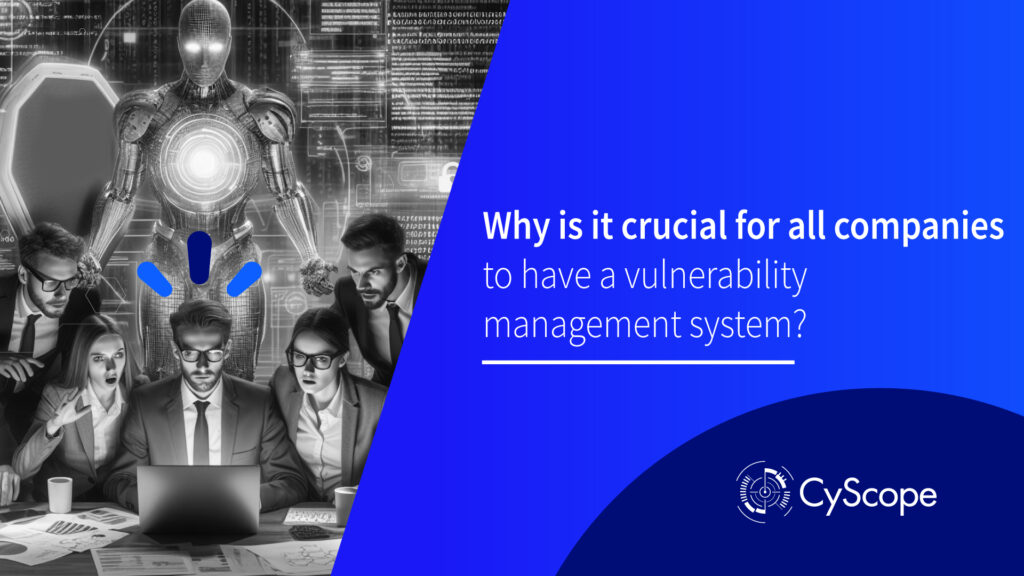Currently, information stands as one of a company’s most valuable assets, making cybersecurity a critical priority. The escalating frequency of cyberattacks, coupled with the expanding global threat landscape, underscores the imperative for companies, regardless of size or scope, to establish robust security measures. In this context, the vulnerability management system emerges as a central component in the digital defense strategy.
In this article, we will delve into detail on why it is essential for all companies to have a vulnerability management system in place.
What is the objective of a vulnerability management system?
A vulnerability management system is a suite of processes and tools meticulously crafted to identify, evaluate, mitigate, and manage vulnerabilities within an organization’s information systems. These vulnerabilities may include software flaws, insecure configurations, weaknesses in network infrastructure, or any other aspect susceptible to exploitation by malicious actors to compromise the organization’s security posture.
The primary objective of a vulnerability management program is to mitigate the risk of security breaches and safeguard critical assets of the company, such as confidential data, critical systems, and the company’s reputation. This is accomplished through systematic identification of vulnerabilities, assessment of their potential impact, and implementation of corrective measures to reduce the identified risks.
It is important to note that vulnerability management programs typically include several stages, including:
- Information asset identification
- Vulnerability assessment
- Risk prioritization
- Implementation of mitigation measures
- Continuous monitoring to ensure effectiveness.
Why is it imperative for companies to have a vulnerability management system?
It is paramount for all companies to have a Vulnerability Management System for several critical reasons:
Information security
A vulnerability management system is fundamental in ensuring the security of a company’s information. It identifies and addresses weaknesses in information systems, ranging from software vulnerabilities to insecure configurations, which could be exploited by cybercriminals. By rectifying these vulnerabilities, companies can safeguard the confidentiality, integrity, and availability of their critical data.
Compliance requirements
In the current regulated landscape, companies are obligated to adhere to a variety of laws and regulations concerning information security. A vulnerability management system aids companies in meeting these legal requirements by ensuring that measures are taken to protect sensitive customer and employee data. From the General Data Protection Regulation (GDPR) in the European Union to the California Consumer Privacy Act (CCPA) in the United States, a vulnerability management system is undeniably an invaluable tool for ensuring regulatory compliance.
Protection against cyber attacks and vulnerability
As previously mentioned, in a world where cyber-attacks are becoming increasingly frequent and sophisticated, protection against these threats is an absolute priority. A vulnerability management system aids in preventing cyber-attacks by identifying and rectifying weaknesses in information systems before they can be exploited by attackers. From ransomware to Distributed Denial-of-Service (DDoS) attacks, a vulnerability management system serves as a vital defense against a wide array of cyber threats.
Proactive risk management
Beyond safeguarding against cyber-attacks, a vulnerability management system serves as a proactive tool for businesses to manage risks associated with their operations. By identifying and addressing security vulnerabilities, companies can diminish the likelihood and impact of potential security incidents. This not only safeguards critical assets but also fosters trust among customers and business partners.
Read also: How to identify a ransomware attack? Warning signs and prevention
Conclusion
Information security has become an unavoidable priority for all businesses. The implementation of a vulnerability management system is not merely an option but an imperative necessity. This system not only protects a company’s digital assets and sensitive information but also ensures regulatory compliance and provides a crucial defense against the escalating cyber threats. By embracing a proactive approach to security, businesses and financial entities can mitigate risks, safeguard their reputation, and uphold the trust of their customers and business partners.
Are you prepared to safeguard your digital assets and sensitive information effectively? Contact CyScope today to learn more about vulnerability management and start strengthening your cybersecurity posture.





